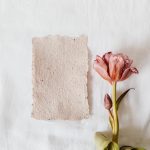I remember when I bought a new canvas bag that felt as stiff as a cardboard box. It was a struggle to use until I discovered some simple methods to soften the material.
From using white vinegar to liquid fabric softener, there are various techniques that can transform your canvas items into cozy essentials.
But there's one surprising trick that many people overlook, and it might just be the game-changer you need to elevate your canvas comfort to the next level.
Table of Contents
Key Takeaways
- Use white vinegar in various methods for natural softening and freshness
- Explore alternative techniques like baking soda or fabric softener for canvas softness
- Try specialized softening methods such as freezing or using a dryer with tennis balls
- Ensure thorough soaking and air drying for best results in softening canvas
Canvas Softening Methods
To soften canvas material effectively, consider incorporating simple household ingredients like white vinegar into your laundry routine. When washing canvas items, using cool water and a gentle detergent can aid in the softening process. The acidity of white vinegar helps break down the stiffness in the fabric, leaving it feeling softer to the touch. Adding half a cup of white vinegar to the rinse cycle can work wonders for softening canvas materials without the need for harsh chemicals.
Moreover, soaking the canvas in a mixture of water and vinegar before washing can further enhance the softness of the fabric. This pre-soaking method allows the vinegar to penetrate the fibers, resulting in a softer texture once the washing process is complete. Remember to air dry your canvas items to help maintain their newfound softness.
With regular wear and proper care, canvas items will naturally soften over time, providing you with comfortable and cozy clothing and accessories.
Vinegar Soak Technique
I've got some great insights on the benefits of using vinegar to soften canvas material. Let's talk about why vinegar is a game-changer for your canvas items.
How to go about the soaking process, and the best way to dry the canvas for fantastic results. The simple steps you need to follow to soak them effectively and the key to achieving that optimal softness through proper drying techniques.
Stay tuned for some practical tips on making your canvas clothing and accessories feel brand new!
Vinegar Benefits for Canvas
Softening canvas material using vinegar offers a natural and effective way to break down fibers, reduce stiffness, and eliminate odors and bacteria in the fabric. Here are three benefits of using vinegar for softening canvas:
- Natural Softening: Vinegar acts as a natural softening agent, gently loosening the fibers of the canvas to make it more pliable and comfortable.
- Odor Elimination: The acidic properties of vinegar help to neutralize and eliminate any unwanted odors that may be present in the canvas material.
- Antibacterial Properties: Vinegar also works to combat bacteria, ensuring that your canvas stays fresh and clean during the softening process.
Soaking Process Steps
After exploring the benefits of vinegar for softening canvas, let's now walk through the steps of the soaking process using the Vinegar Soak Technique. To start, create a solution using a ratio of 1 cup of white vinegar to water. Then, immerse the canvas fabric in this mixture for 1-2 hours. The water and vinegar work together to penetrate the fabric, breaking down stiffness and making the material more pliable. The acidity of the vinegar plays a crucial role in this softening process. Once the soaking time is complete, remove the canvas and allow it to air dry. This method is effective in achieving a softer feel for your canvas fabric.
| Steps | Description | Tips |
|---|---|---|
| Create Vinegar Solution | Mix 1 cup of white vinegar with water | Ensure the fabric is fully submerged |
| Soak Fabric | Immerse the canvas material in the vinegar solution for 1-2 hours | Use a container large enough for the fabric |
| Remove and Dry | Take out the fabric and air dry it | Avoid wringing out excess liquid |
Drying and Results
To maintain the softness achieved through the vinegar soak technique, it's essential to air dry the canvas material thoroughly. Here are three key points to consider for drying and achieving optimal results:
- Air Dry: After washing and soaking the canvas in vinegar, allow it to air dry completely. Avoid using a dryer as heat can counteract the softening effects of the vinegar soak.
- Patience is Key: Be patient during the drying process. Rushing this step may lead to stiffening of the fabric, undoing the softness gained through the vinegar soak.
- Check for Desired Softness: Once the canvas is fully dry, assess the softness. If the desired level of softness hasn't been achieved, consider repeating the vinegar soak technique for further softening.
Baking Soda Scrub
With a simple mixture of baking soda and water, you can create a paste to gently scrub onto the stiff areas of your canvas material. This baking soda scrub is a natural and effective way to soften the bag.
By applying the paste to the stiff canvas and gently scrubbing, you allow the baking soda to work its magic in breaking down the stiffness. It's important to let the baking soda scrub sit on the canvas for a few hours to maximize its softening effect.
After giving it some time, rinse off the paste thoroughly with cold water. If the canvas is still stiff, don't hesitate to repeat the baking soda scrubbing process until you achieve the desired softness.
This method isn't only simple but also environmentally friendly, making it a great choice for softening your canvas material.
Fabric Softener Spray
I've discovered that fabric softener spray is a game-changer when it comes to softening and freshening up canvas materials.
By simply spraying it onto the fabric, you can quickly reduce stiffness and add a pleasant scent to your canvas items.
This method isn't only convenient but also effective in targeting specific areas that need softening.
Spray Application Method
Using a fabric softener spray can effectively soften canvas material by providing a gentle mist for even distribution and optimal results. When applying fabric softener spray to stiff canvas:
- Direct Application: Spray the fabric softener directly onto the canvas surface for thorough coverage.
- Penetration: Allow the fabric softener to penetrate the fibers of the canvas, especially focusing on stiff areas.
- Light Mist: Use a light misting of fabric softener spray to prevent oversaturation and potential damage to the material.
Benefits of Softener
Fabric softener spray not only reduces static, wrinkles, and stiffness in canvas materials but also enhances their softness and flexibility, making them more comfortable to wear. When applied to a waxed canvas bag, the softener helps soften the material, making it more pliable and pleasant to the touch.
Additionally, the spray can add a delightful scent to the canvas, enhancing the overall experience of using the item. By incorporating fabric softener spray into your canvas care routine, you can maintain the quality and longevity of your belongings, ensuring they remain soft and supple over time.
Enjoy the benefits of softer, more flexible canvas with the simple addition of fabric softener spray to your maintenance regimen.
Steam Treatment
Utilizing steam to treat canvas material is a practical method for softening and relaxing its fibers, aiding in the removal of wrinkles and stiffness. Here are three key points to consider when using steam treatment on canvas fabric:
- Penetrating Heat and Moisture: The heat and moisture from the steam deeply penetrate the canvas fabric, helping to make it more pliable and easier to manipulate for various projects.
- Versatile Tools: Steam treatment can be carried out using a handheld steamer, steam iron, or even steam from a kettle, offering flexibility in how you choose to soften your canvas material.
- Effective Results: This method is highly effective in removing wrinkles, creases, and stiffness from the canvas, making it an excellent technique for shaping, molding, and reshaping the fabric to suit your needs.
Conditioner Application
To effectively soften canvas material, consider applying a specialized canvas conditioner following the manufacturer's instructions for optimal results. Canvas conditioners are designed to penetrate the canvas fibers, enhancing flexibility and softness. By regularly using a conditioner specifically formulated for canvas fabrics, you can maintain the softness and durability of your canvas items.
Canvas Conditioner Benefits:
| Pros | Cons |
|---|---|
| Penetrates fibers effectively | Some may alter color |
| Enhances flexibility | Requires regular reapplication |
| Maintains softness | May have a strong odor |
| Improves durability | Could be costly |
| Specifically formulated | Not suitable for all fabrics |
Remember to test the conditioner on a small, inconspicuous area of the canvas before applying it widely. This precaution ensures that the conditioner works well with your specific material. Following these guidelines will help you achieve the desired softness for your canvas items without compromising their quality.
Olive Oil Rub
For a natural approach to softening canvas material, consider trying an olive oil rub as a gentle and effective method. Rubbing olive oil on a waxed canvas bag or jacket can work wonders in making the material more pliable and comfortable to wear.
Here are three key points to keep in mind when using this technique:
- Penetration: Olive oil penetrates the fibers of the canvas, helping to soften them from within.
- Application: Use a small amount of olive oil and rub it evenly over the surface of the waxed canvas. This ensures that the oil is distributed uniformly for the best softening effect.
- Resting Time: Allow the olive oil to sit on the canvas for a few hours or even overnight. This gives the oil ample time to work its softening magic on the material.
Lemon Juice Rinse
I've found that citrus, particularly lemon juice, works wonders when it comes to softening canvas material.
The acidic nature of lemon juice helps to break down the fibers in the canvas, resulting in a softer texture.
Not only does it soften the fabric, but it also acts as a natural freshener, leaving your textiles smelling clean and revitalized.
Citrus Softens Fabric
Using the natural acids found in citrus, such as lemon juice, can effectively soften stiff canvas material. Here are three simple steps to make your canvas fabric softer using lemon juice:
- Create Lemon Juice Rinse: Dilute lemon juice with water in a spray bottle.
- Apply to Canvas: Spray the lemon juice mixture onto the stiff canvas material before washing.
- Let it Sit: Allow the lemon juice to penetrate the fabric for a few minutes before rinsing and washing as usual.
Acidic Solution Works
To soften stiff canvas material effectively, consider utilizing a lemon juice rinse as an acidic solution. The citric acid present in lemon juice plays a vital role in breaking down the stiffness in the canvas fibers, making them more pliable.
It's important to dilute the lemon juice with water to prevent any potential damage to the fabric. Once the solution is prepared, allow it to soak into the canvas for a sufficient amount of time to achieve optimal softening results.
After the soaking period, be sure to rinse the canvas thoroughly to remove any residual lemon juice. This method can be a natural and effective way to soften your canvas items without harsh chemicals.
Natural Freshener for Textiles
For a natural and effective way to freshen up textiles, try utilizing a lemon juice rinse as a refreshing solution. When dealing with canvas items, this method can work wonders.
Here are three key points to keep in mind:
- Natural Freshener: Lemon juice serves as a natural alternative to chemical-laden fresheners for canvas material.
- Odor Removal: The acidic properties of lemon juice help in breaking down bacteria and eliminating stubborn odors from the fabric.
- Dilution is Key: It's essential to dilute the lemon juice with water before applying it to the canvas to avoid any potential damage while still reaping its benefits.
Freezing Method
I found that freezing the canvas material is a simple and effective way to soften it by breaking down the fibers.
To start, place your canvas item inside a plastic bag before freezing to prevent moisture absorption, which could potentially damage the material. Seal the bag tightly to ensure no moisture gets in. Then, place the bag in the freezer for a few hours or overnight.
Once the freezing time is up, remove the canvas from the freezer and let it thaw naturally. After thawing, manipulate or stretch the canvas gently to help enhance its softness.
This freezing method is a natural and easy way to relax the canvas fibers, resulting in a softer texture overall. It's a straightforward technique that can yield significant improvements in the feel of your canvas material without the need for any harsh chemicals or processes.
Tumbling Dryer Hack
Breaking down stiff canvas material can also be achieved using a simple trick involving tennis balls in the tumble dryer. Here's how to soften your canvas pants with this handy hack:
Tennis Ball Trick for Softening Canvas:
- Load and Tumble: Place your stiff canvas pants along with a few clean tennis balls in the dryer.
- Agitate for Softness: As the dryer runs, the tennis balls will bounce around, agitating the fabric and helping to break down stiffness.
- Effortless Softening: This method mimics the manual process of breaking in canvas without the need for excessive effort.
Using tennis balls in the tumble dryer is a convenient way to soften canvas items like pants, jackets, or overalls. Remember not to overload the dryer to allow proper agitation for effective softening. Enjoy the softened feel of your canvas pants with this simple yet effective tumble dryer hack.
Sandpaper Buffing
Buffing canvas material with sandpaper gently smooths out rough fibers, enhancing its softness and comfort. This technique involves using fine-grain sandpaper to rub the surface of the canvas gently. By breaking down the rough fibers, sandpaper buffing helps soften stiff canvas items like jackets, bags, or pants, making them more pleasant to wear. To achieve the best results, it's essential to approach this process with a light touch. Gradually buffing the entire surface ensures an even softening effect without damaging the fabric.
When engaging in sandpaper buffing, it's crucial to clean the canvas material beforehand to remove any dirt or debris that could interfere with the process. Additionally, using fabric-specific sandpaper designed for delicate materials like canvas is recommended to avoid causing unnecessary damage. By incorporating this technique into your fabric care routine, you can enjoy the benefits of softer, more comfortable canvas items.
Frequently Asked Questions
Can You Soften Canvas Fabric?
Sure, I soften canvas fabric by washing it with vinegar, using fabric softener, and air drying. Regular wear also helps naturally soften it over time. Avoid high heat drying to maintain its softness.
How Do You Loosen a Stiff Canvas?
To loosen stiff canvas, I recommend soaking it in a water and white vinegar solution. Consider using fabric softener or baking soda during washing and avoid high heat drying. Rolling, sanding, and regular use also help soften canvas over time.
How Do You Soften a Stiff Canvas Jacket?
Like a sculptor shaping clay, I work to soften my canvas jacket. Soaking in vinegar, sanding gently, washing with care, and avoiding heat. Through use, the canvas molds to my body, becoming a comfortable second skin.
How Do You Make Cotton Canvas Soft?
To make cotton canvas soft, I recommend washing with gentle detergent in cool water, avoiding high heat drying. Regular use also helps soften canvas over time. These methods preserve the fabric's quality while enhancing comfort.
- How to Store Fabrics Correctly - July 18, 2024
- Sustainable Fabric Care Tips - July 18, 2024
- Top Tools for Fabric Care - July 18, 2024






